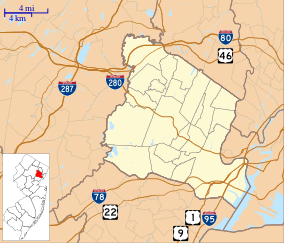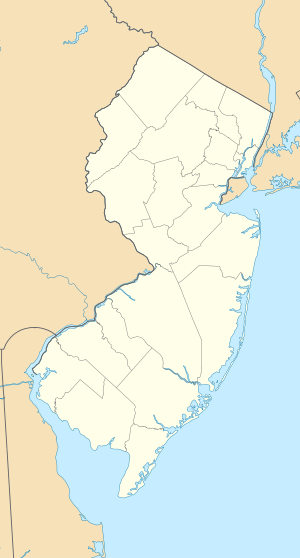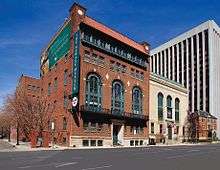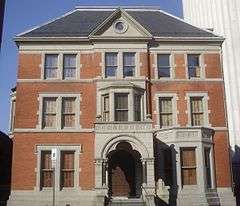Newark Museum
|
| |
| Established | 1909 |
|---|---|
| Location |
49 Washington Street Newark, New Jersey, USA |
| Director | Steven Kern[1] |
| Public transit access | Washington Park Station (Newark Light Rail) |
| Website | |
|
James Street Commons Historic District | |
|
John Ballantine House | |
   | |
| Coordinates | 40°44′34″N 74°10′18″W / 40.742651°N 74.171779°WCoordinates: 40°44′34″N 74°10′18″W / 40.742651°N 74.171779°W |
| NRHP Reference # | 78001758[2] |
| NJRHP # | 1275[3] |
| Significant dates | |
| Added to NRHP | January 9, 1978 |
| Designated NJRHP | February 10, 1977 |

The Newark Museum, in Newark, Essex County, New Jersey, United States, is the state's largest museum. It holds fine collections of American art, decorative arts, contemporary art, and arts of Asia, Africa, the Americas, and the ancient world. Its extensive collections of American art include works by Hiram Powers, Thomas Cole, John Singer Sargent, Albert Bierstadt, Frederick Church, Childe Hassam, Mary Cassatt, Edward Hopper, Knox Martin, Georgia O'Keeffe, Joseph Stella, Tony Smith and Frank Stella.
The Newark Museum's Tibetan galleries are considered among the best in the world. The collection was purchased from Christian missionaries in the early twentieth century. The Tibetan galleries have an in-situ Buddhist altar that the Dalai Lama has consecrated. In addition to its extensive art collections, the Newark Museum is dedicated to natural science. It includes the Dreyfuss Planetarium and the Victoria Hall of Science which highlights some of the museum's 70,000 specimen Natural Science Collection. The Alice Ransom Dreyfuss Memorial Garden, located behind the museum, is the setting for community programs, concerts and performances. The garden is also home to a 1784 old stone schoolhouse and Fire Safety Center.
The museum was organized in 1909 by master Newark librarian John Cotton Dana "to establish in the City of Newark, New Jersey, a museum for the reception and exhibition of articles of art, science, history and technology, and for the encouragement of the study of the arts and sciences." The kernel of the museum was a collection of Japanese prints, silks, and porcelains assembled by a Newark pharmacist.[4]
Originally located on the fourth floor of the Newark Public Library, the museum moved into its own purpose-built structure in the 1920s on Washington Park after a gift by Louis Bamberger. It was designed by Jarvis Hunt who also designed Bamberger's flagship Newark store.[5][6] Since then, the museum has expanded several times, to the south into the red brick former YMCA, to the north into the 1885 Ballantine House, and in 1990, to the west into an existing acquired building. At that time much of the Museum, including the new addition, was redesigned by Michael Graves.
The Museum had a mini-zoo with small animals for some twenty years, until August 2010.[7]
See also
Notes
- ↑ “Newark Museum Senior Staff” Newark Museum website. Retrieved October 21, 2014.
- ↑ National Park Service (2009-03-13). "National Register Information System". National Register of Historic Places. National Park Service.
- ↑ "New Jersey and National Registers of Historic Places - Essex County" (PDF). New Jersey Department of Environmental Protection - Historic Preservation Office. January 10, 2010. p. 3. Retrieved April 25, 2010.
- ↑ Alexander 1995, p. 390.
- ↑ Jarvis Hunt Buildings - math.uic.edu - Retrieved July 13, 2008
- ↑ Alexander 1995, p. 399.
- ↑ The Mini Zoo, Newark Museum website.
References
- Alexander, Edward P. (1995-11-01). Museum Masters: Their Museums and Their Influence. Rowman Altamira. ISBN 978-0-7619-9131-1.
External links
| Wikimedia Commons has media related to Newark Museum. |
